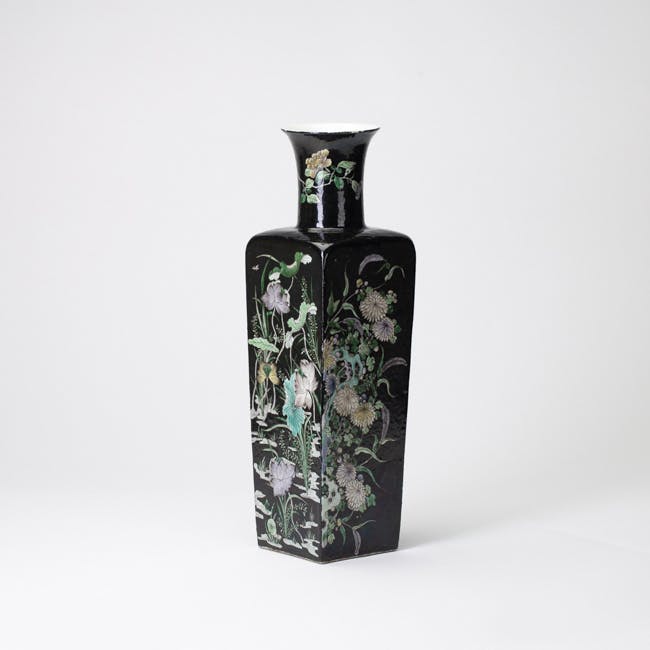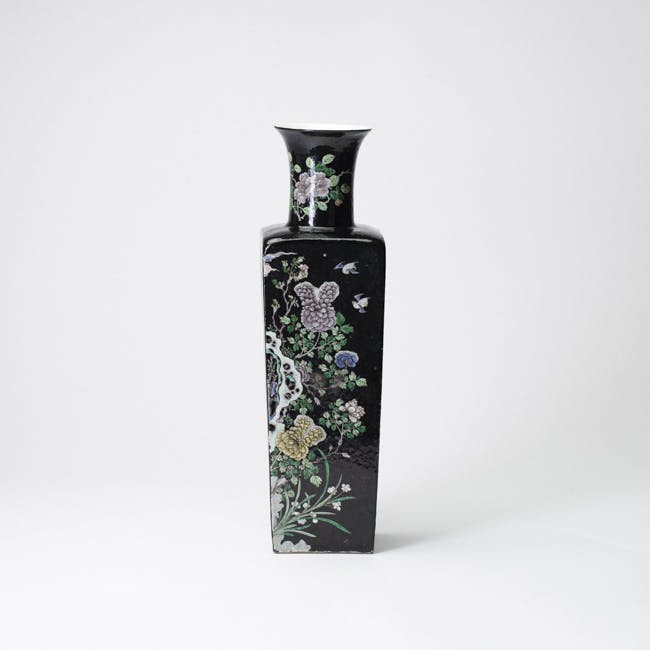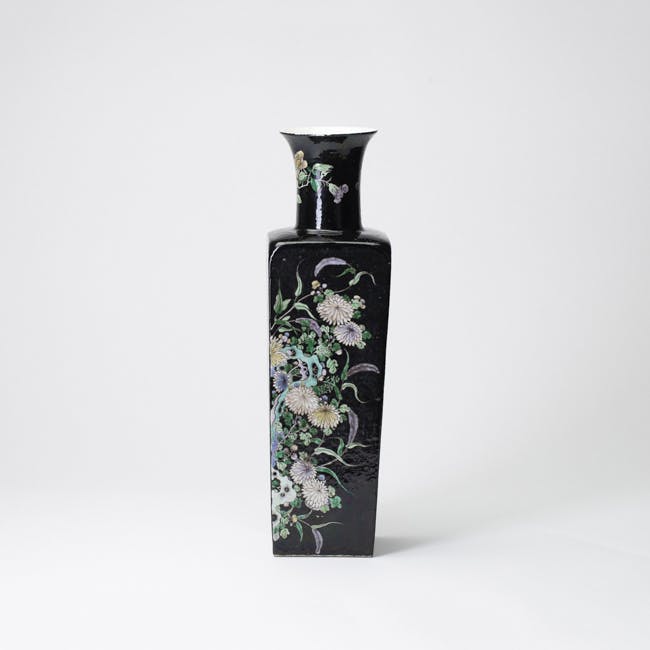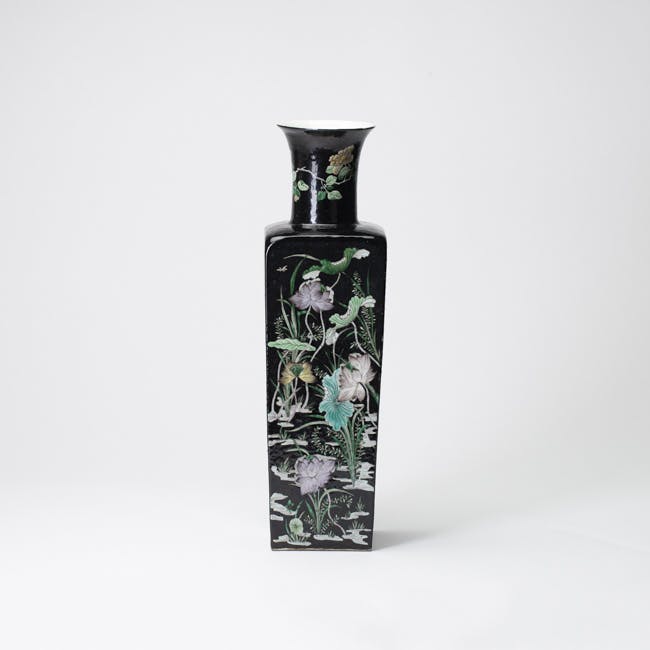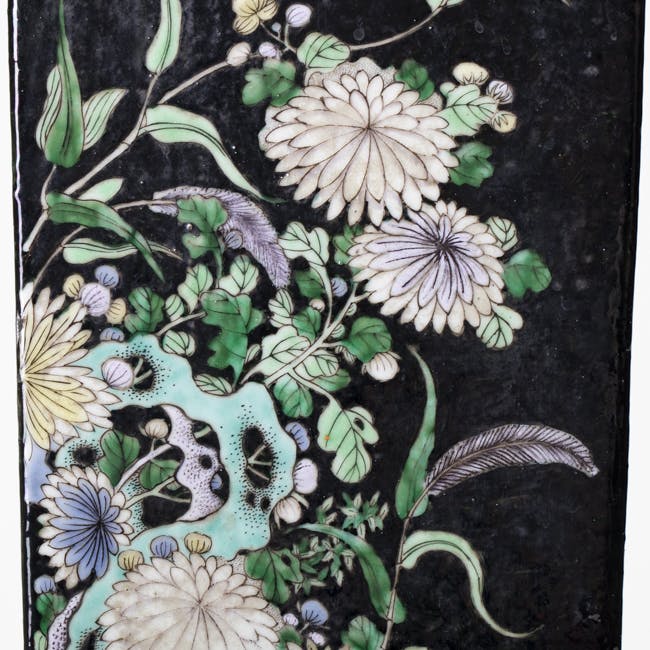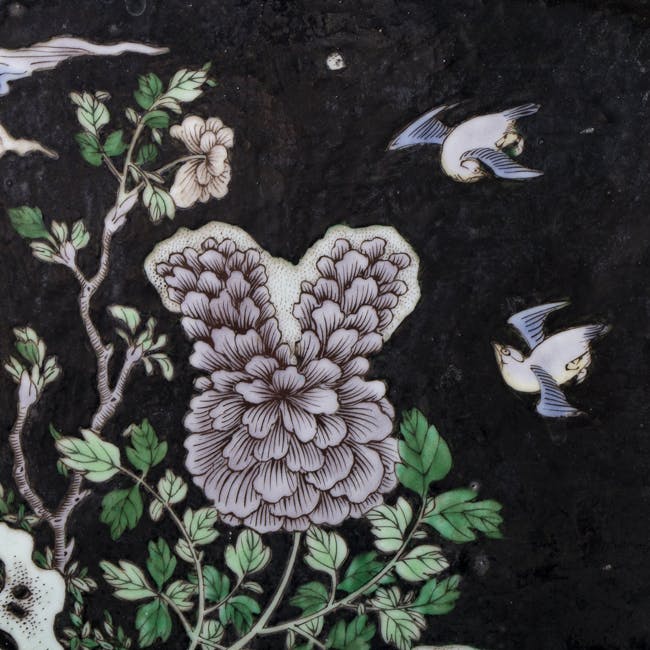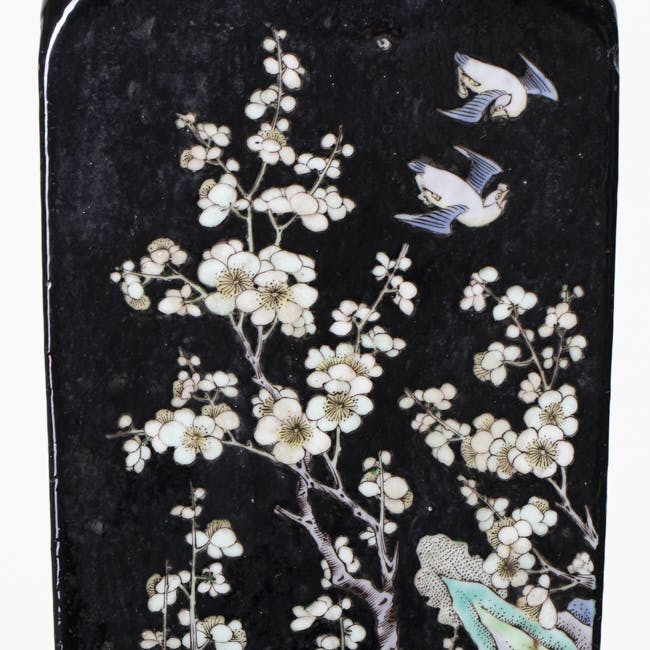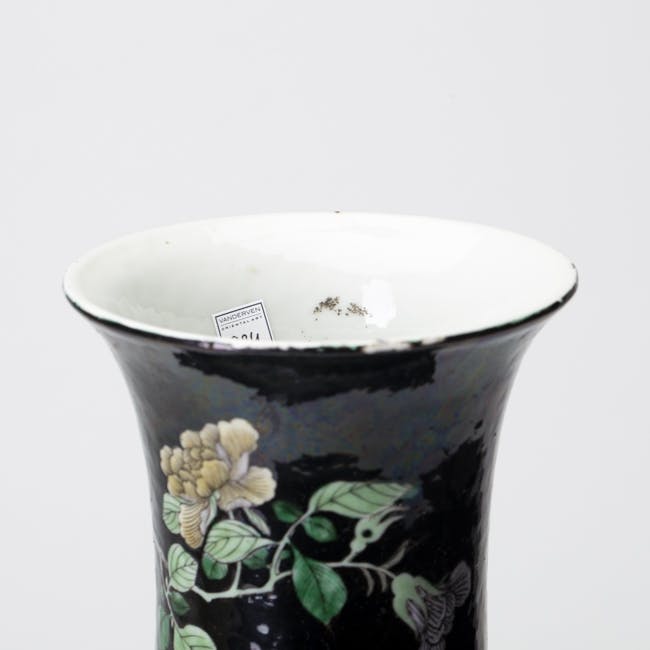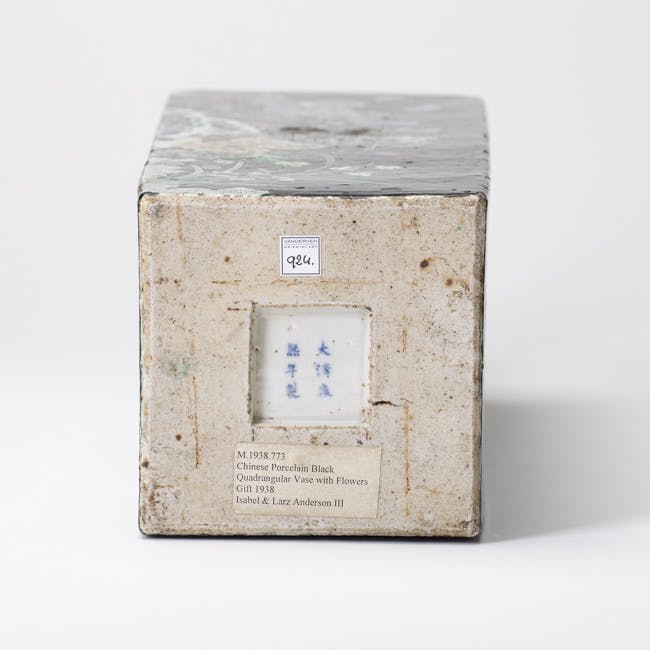In 1862, the Frenchmen Jacquemart and Le Blant published an article on Chinese porcelain in which the term famille verte was introduced. The decoration of porcelains embellished with famille verte enamels on the biscuit often is set against a dominant solid-colour ground of black, yellow, green or occasionally, aubergine; the first two groups were placed in the sub-categories of famille noire and famille jaune.
According to Eva Ströber, the intense black of famille noire with its green gleam, was obtained by adding iron oxide to a glaze that contained lead, resulting in an oxidisation process during firing. This process was rediscovered in the latter part of the 17th century. It had previously been developed in Jingdezhen, but had disappeared because of the turmoil in China with the fall of the Ming. During the reign of Kangxi, the famille noire glazes were achieved by applying an additional layer of green glaze under and over the iron black parts.
There is a Famille Noire 5-piece garniture from the former Salting Collection in the Victoria & Albert Museum (London). The Taft Museum also houses a good collection objects in Famille Noire enamels.
This colour-scheme had a fashion revival in the 19th & 20th Centuries, when they attempted to emulate the earlier Kangxi techniques in an attempt to satisfy the demand. As a general rule genuine famille noire pieces felt to have been made in the Kangxi reign (1662-1722) have the black color achieved by applying a copper-green lead based enamel over an unfired coating of the dry black cobalt which are also used for black outlines. During the firing the two enamels fused resulting in a deep black effect with a hint of green especially visibly where the two layers doesn't fully cover each other. Later black enameling appears to be done with a different technique.
